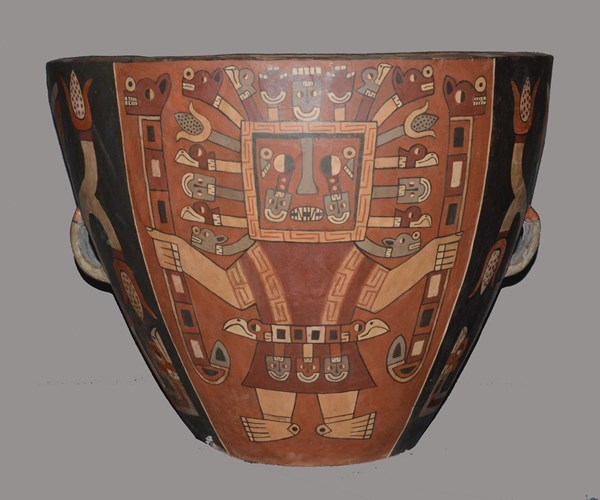The Festival of The Images in The Andes
‘Dobletes’ and parallelism
‘Doblete’
This is what we could call a ‘poetic’ structure that is not a rhyme but the intentional repetition of an idea or feeling. It works through the duplication of an image or a phrase with a minimal but significant variation each time, as we can see in the main drawing of a quero-cup and in the Wari ceramic vessel.
As in the quero-cup, in the Wari ceramic vessel, the central figure, holding staffs in each hand and wearing a headdress with radiating snakes, is repeated on the other side of the vessel, creating a ‘doblete’.
Parallelism
This structure is well illustrated in this another quero-cup. A female figure and an ‘amaru’ (winged serpent) is located under the second rainbow. The ‘amaru’ is part of the same field of meanings as the female image located in the first rainbow, although its meaning is more limited.









































